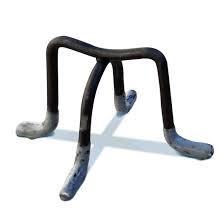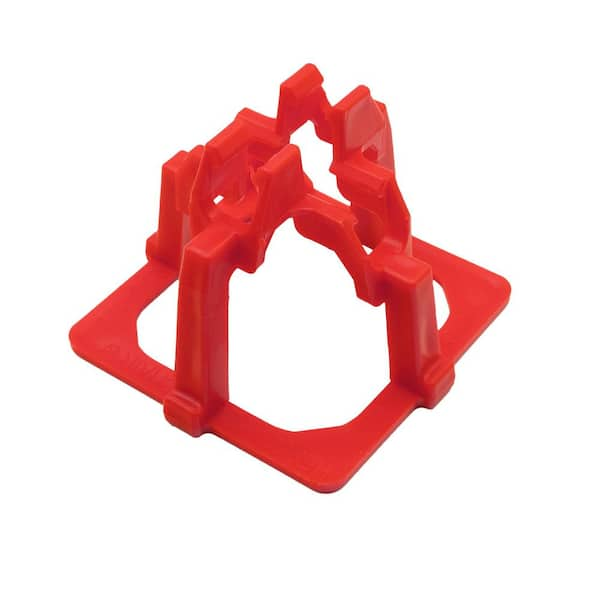Support Your Concrete Working with Smart Spacing Tools

Concrete is the backbone of modern construction. From foundations and walls to pavements and bridges, it's everywhere—and for good reason. It's strong, durable, and adaptable. However, even the toughest concrete can fail if it’s not properly reinforced. That’s where smart spacing tools come into play. Whether you're a seasoned contractor or a DIY enthusiast, using the right tools to support your reinforcement can mean the difference between a strong, lasting structure and one prone to cracks and structural failure.
One of the most reliable and underappreciated tools in this space is the rebar chair. These clever devices help keep steel reinforcement bars (rebar) in place while concrete is poured, ensuring the bars are properly positioned for maximum strength and longevity.

The Importance of Proper Rebar Placement
When concrete is poured, steel rebar is embedded inside to provide tensile strength—something concrete lacks on its own. For the reinforcement to be effective, it must be precisely positioned within the slab or structure. Too close to the surface, and it can corrode over time; too deep, and it won't provide adequate support.
Improperly placed rebar can compromise the integrity of a building. That’s why consistent spacing is essential—and why smart spacing tools, such as rebar chairs, have become indispensable on job sites.
What Are Smart Spacing Tools?
Smart spacing tools are designed to simplify the process of setting and securing rebar before pouring concrete. These include items like plastic spacers, bar supports, and most commonly, rebar chairs.
Rebar Chairs: The MVP of Spacing Tools
Rebar chairs are small, yet mighty supports that elevate rebar off the ground or formwork, holding it at the correct height and position within the concrete pour. They're made from plastic, metal, or a combination of both, and come in various sizes depending on the project requirements.
These chairs not only prevent the rebar from sagging or shifting during concrete placement but also reduce the risk of human error. With chairs in place, workers can spend less time adjusting and more time focusing on the pour itself.
Types of Rebar Chairs and Their Uses
Depending on the job, different types of rebar chairs may be needed:
-
Plastic Rebar Chairs – Lightweight, rust-proof, and ideal for projects requiring non-metallic supports, like architectural concrete work.
-
Metal Rebar Chairs – Often used in commercial or industrial construction due to their high strength and durability.
-
High Chair with Base – Used to support upper layers of rebar in multi-layer slab pours.
-
Continuous High Chairs – Provide long, continuous support for slabs or wide structures needing even elevation.
Choosing the right type of chair helps maintain concrete coverage and structural integrity throughout the life of the structure.
Why Smart Spacing Tools Are Worth the Investment
While it might be tempting to use stones, bricks, or scrap material to support rebar—especially in small-scale projects—this approach often leads to uneven support, potential corrosion, and structural inconsistencies.
Here’s why smart spacing tools like rebar chairs are a smarter, safer choice:
1. Precision Placement
Rebar chairs are manufactured to hold steel at consistent, exact heights. This precision ensures that the entire structure meets engineering and building code requirements.
2. Improved Safety and Strength
Correctly spaced and elevated rebar significantly improves the load-bearing capacity and lifespan of the concrete, reducing the risk of cracking or failure under pressure.
3. Time-Saving
Using the right tools simplifies the setup process, leading to faster installation and fewer errors. This can cut labor costs and reduce downtime.
4. Long-Term Cost Efficiency
Though they may seem like a small expense, rebar chairs protect against much larger costs associated with repairs or rebuilds caused by structural failure.
Smart Tips for Using Rebar Chairs
To get the most out of your spacing tools, consider the following best practices:
-
Plan Ahead – Calculate how many chairs you’ll need based on slab size, bar spacing, and layer requirements.
-
Choose the Right Material – Plastic chairs are great for residential or decorative projects, while metal chairs are better for heavy-duty construction.
-
Space Them Evenly – Chairs should be placed every 2 to 4 feet depending on bar size and load. Check local codes or engineering specs.
-
Anchor if Needed – For uneven surfaces or outdoor pours, some chairs can be anchored or come with wide bases for added stability.
Applications Across Construction
Rebar chairs and other spacing tools are used in a wide range of concrete applications, including:
-
Residential slab foundations
-
Commercial building floors
-
Road and highway construction
-
Retaining walls and basements
-
Bridges and overpasses
Wherever reinforced concrete is involved, smart spacing tools are making the work faster, safer, and more reliable.
Conclusion
In the world of concrete construction, the smallest tools often make the biggest difference. Rebar chairs, while modest in size, play a crucial role in the strength, safety, and success of any reinforced concrete project. They ensure that reinforcement stays exactly where it needs to be—creating a durable, long-lasting final product.
By investing in smart spacing tools, you’re not just making the job easier; you're building with precision, confidence, and long-term stability. So the next time you're prepping for a pour, don’t overlook these essential supports. They might just be the smartest choice you make on the site.
- Questions and Answers
- Opinion
- Motivational and Inspiring Story
- Technology
- Live and Let live
- Focus
- Geopolitics
- Military-Arms/Equipment
- Security
- Economy
- Beasts of Nations
- Machine Tools-The “Mother Industry”
- Art
- Causes
- Crafts
- Dance
- Drinks
- Film/Movie
- Fitness
- Food
- Games
- Gardening
- Health
- Home
- Literature
- Music
- Networking
- Other
- Party
- Religion
- Shopping
- Sports
- Theater
- Health and Wellness
- News
- Culture

